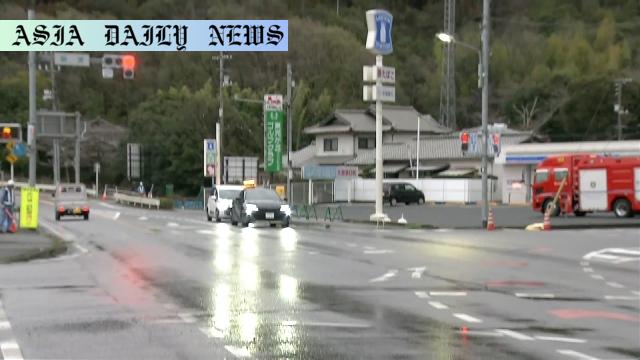Wildfires ravaged Okayama, forcing evacuation orders for over a thousand residents. Now they are fully extinguished, providing relief to many.
Wildfires in Okayama burned a historic 565 hectares, forcing 1,146 residents to evacuate.
Officials lifted evacuation orders as firefighters contained the blazes with 11 helicopters and ground efforts.
Six structures were damaged, but no injuries were reported during the events.

Historic Wildfires Devastate Okayama
The western Japanese city of Okayama recently faced its most destructive wildfires in history, consuming 565 hectares of land. Starting on Sunday, the fires rapidly became unmanageable, necessitating evacuation orders for 1,146 residents from 627 households in the Kogushi area. These wildfires destroyed six structures, including homes and warehouses, yet, remarkably, no injuries were reported, underscoring the effectiveness of local emergency response teams in ensuring public safety.
Massive Multi-Agency Firefighting Response
In response to this crisis, over 400 firefighters were mobilized, the highest number since the wildfire outbreak. Fire mitigation involved coordinated operations on the ground and aerial support. Eleven helicopters, including those belonging to Japan’s Self-Defense Forces, played a crucial role extinguishing the flames. Additionally, the area experienced rainfall from Thursday evening through Friday morning, aiding efforts to douse the persistent fires. By Friday morning, officials announced that the fires had finally been brought under control. Consequently, all evacuation orders in Okayama and the neighboring city of Tamano were rescinded, providing much-needed relief to residents who had endured days of uncertainty and fear.
Lessons from the Largest Wildfire in Okayama’s History
This disaster marked a significant event in Okayama Prefecture’s history, not only for its unprecedented scale but also for the important lessons in disaster preparedness and management. The quick deployment of fire and rescue teams, coordinated use of advanced air equipment, and timely communication with local residents demonstrated an effective and organized approach to mitigating such large-scale disasters. However, it also highlighted the severe risks associated with dry weather conditions and their potential to exacerbate wildfires.
Moving forward, the city is expected to examine the causes of these fires to prevent future occurrences, particularly in similarly vulnerable areas. Local authorities may work to implement increased awareness campaigns on fire safety and enhance existing firefighting infrastructure. For residents, this event serves as a stark reminder of the importance of readiness in the face of natural calamities.
A Symbol of Resilience
The swift containment of these historic wildfires in Okayama is a testament to the resilience and coordination of local officials, emergency teams, and affected residents. While the losses were significant, the absence of injuries showcases the city’s commitment to prioritizing human lives above all else. As Okayama returns to normalcy, efforts to repair structural damages and emotionally support displaced residents are likely to follow.



Commentary
The Significance of Community Cooperation
The recent wildfire crisis in Okayama is a striking example of how collective effort and advanced preparedness can mitigate large-scale natural disasters. The deployment of over 400 firefighters, along with 11 helicopters for aerial firefighting, highlights the extensive resources and planning required to tackle such events. It is a testament to human capability when multiple agencies, including local forces and Japan’s Self-Defense Forces, come together in moments of crisis.
Learning from Natural Disasters
Natural disasters like these wildfires are relentless reminders of the need for constant vigilance and improvement in disaster management strategies. While Okayama successfully avoided casualties, the damage to homes, warehouses, and ecological areas cannot go unnoticed. The city can use this as an opportunity to facilitate better public awareness about fire hazards and invest in infrastructure designed specifically to detect and control wildfires at their early stages.
The Resilience of Residents
One of the most remarkable aspects of this story is the resilience shown by the citizens of Okayama and its neighboring cities. Being displaced from one’s home is not an easy experience, but the evacuees complied with orders, thereby aiding the firefighting efforts. Such cooperation illustrates the importance of trust in local authorities and adherence to evacuation protocols during emergencies. Their quick return to safety signals a hopeful recovery phase for Okayama.
In conclusion, while the fires caused devastation, Okayama’s story of overcoming this challenge underlines the power of collaboration and the resilience of the human spirit. This event serves not only as a cautionary tale but also as an inspiration for other regions to improve their disaster management frameworks.